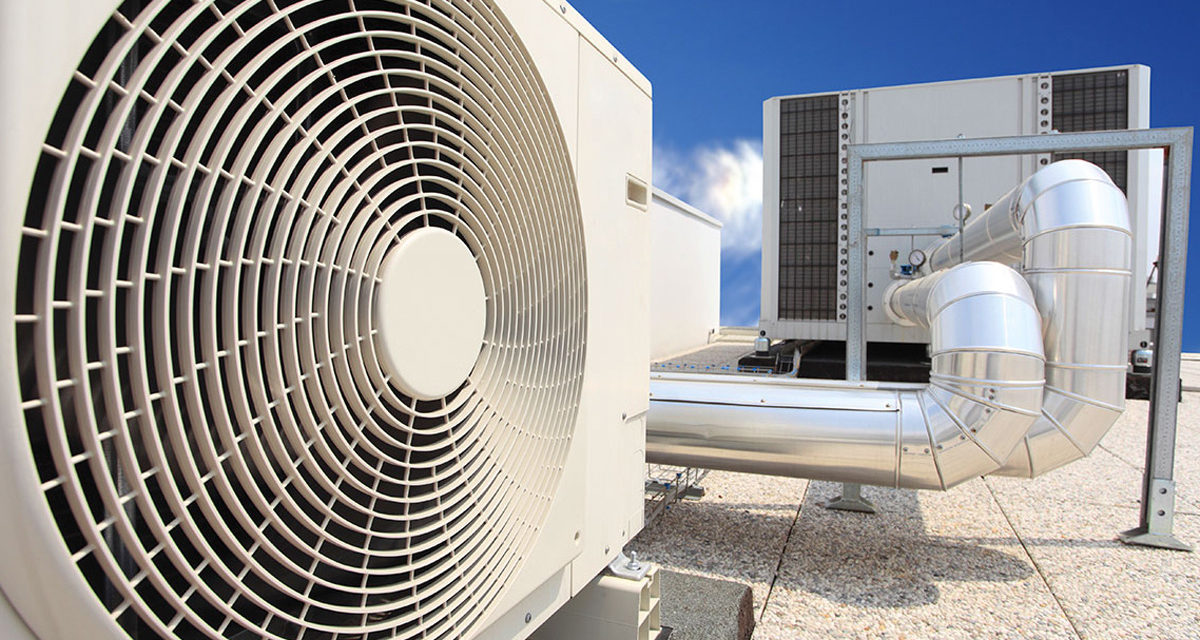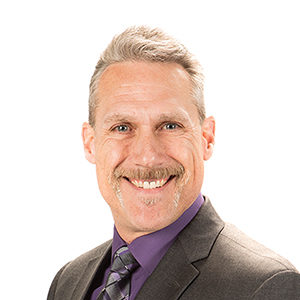NOTE: The following is designed to provide an overview of industry updates and frequently asked questions, as regulatory guidelines are not yet available related to the planning and development of HVAC systems specific to COVID-19. Please consult with your HVAC design engineer and/or AHJ when designing or altering systems. You can also submit your questions to TELS by filling out our simple form at the bottom of this post and a helpful HVAC specialist will contact you to discuss your specific situation and possible solutions.
As Senior Living buildings and maintenance teams navigate COVID-19, many have called and emailed TELS Building Services with questions specifically about their HVAC systems. Find answers to some of the most common questions fielded by two of our HVAC technical experts and hear how they’re helping buildings all over the country. Have a specific question in mind not answered here? Fill out our simple form at the bottom of this post and helpful a TELS specialist will get in touch.
Greg Robinson
Director of Building Management Solutions
Direct Supply TELS
Greg Robinson brings more than 40 years of experience in facility management, maintenance, and mechanical and electrical construction contracting. Before coming to Direct Supply, he held senior leadership positions and led development efforts of Integrated Facilities Management, Construction Management & Maintenance Services solutions for Fortune 500 companies, including those in the healthcare and life sciences industries.
Jeff Beyersdorf
Building Services Consultant
Direct Supply TELS
Jeff Beyersdorf brings more than 37 years of experience in mechanical contracting and HVAC. Before coming to TELS, he was a construction project operations manager at a large nationwide mechanical firm, where he oversaw a 20-member operations team comprising estimators, union manpower, Test and Balance (TAB) and project managers working on installations ranging from $200,000 to $10M. He holds an HVAC Contractors License and is a member of the HVAC Advisory Board for Northwestern Technical College in Green Bay with accreditations in project management from Clemson University.
What do we know about the relationship between COVID-19 and HVAC systems?
JB: Well, right now I think the only known is that there are so many unknowns! As far as how it relates to the transmission of infectious disease, both direct and indirect contact transmission by droplets, and inhalation of airborne particles containing infectious microorganisms.
GR: The situation changes daily. But we’re keeping up with new products and research, working with customers and reacting accordingly.
What information have you seen come out from ASHRAE?
GR: Much of the ASHRAE research is more hospital and larger commercial-facility based, so their conclusions and methodologies meet those ventilation needs. I’d point folks to their COVID-19 (Coronavirus) Preparedness Resources and Guidance for Building Operations During the COVID-19 Pandemic for more information.
JB: Generally, ASHRAE’s position is that facilities of all types should follow, as a minimum, the latest practice standards and guidelines. ASHRAE 62 Standards cover ventilation in many facility types, and Standard 170 covers ventilation in healthcare facilities. New and existing healthcare intake and waiting areas, crowded shelters, and similar facilities should go beyond the minimum requirements of these documents, using techniques covered in ASHRAE’s Indoor Air Quality Guide (2009) to be even better prepared to control airborne infectious disease (including a future pandemic caused by a new infectious agent). But to Greg’s point, comparing these to Senior Living isn’t apples to apples.
Are these ASHRAE standards relevant to Senior Living equipment?
JB: Yes and no. Many of the methodologies contained within the standard may be applicable in some way to Senior Living environments. Unfortunately, most of the systems within Senior Living do not have the capabilities to meet the recommendations as fully as ASHRAE defined above.
GR: Right, many Senior Living buildings were not designed with full building make-up air capabilities to deliver fresh outside air, which is the crux of the matter. In fact, many buildings’ resident rooms were designed with unitary (local) HVAC equipment that recirculates and treats the air solely in that resident room.
Can you expand on that? What types of equipment don’t necessarily apply?
GR: These can be in the form of PTACs, water-source heat pumps, split-system air handlers, rooftop units, fan coils, etc. So while PTACs and rooftop units may provide some fresh air, the typical installation of these other systems make it difficult to increase the fresh-air displacement within a specific area.
JB: Going a step further, in some cases these systems may be designed to condition up to four or more resident rooms, which leads to additional air cross-connection or cross-contamination. While these HVAC systems control the temperature in the space, there is rarely any capability to control the relative humidity within Senior Living facilities.
You mention humidity control as well as temperature. Why the distinction?
JB: We’ve seen various studies show that temperature and humidity may impact the spread of airborne viruses, so being able to control both is ideal. It’s recommended that the relative humidity in buildings be maintained between 40% and 60%.
OK, so given the recommendations provided by ASHRAE and the limitations of typically installed systems in Senior Living, are there steps facilities should consider?
JB: Yes, as they relate to system operation, maintenance and ventilation.
GR: There are practical limits to what HVAC systems can accomplish in preventing transmission of infections. HVAC systems in and of themselves may not directly impact the transmission of infectious disease. What we’re talking about here are systems that directly impact fresh-air intake and circulation, such as make-up air units, which should be maintained at higher levels and be operating at peak efficiency.
JB: Maybe it goes without saying, but I’ll say it anyway: any failed make-up air ventilation systems should be replaced. And any overlooked ventilation systems should have repairs made in a timely manner. I would also recommend to test and balance as necessary to gain optimum airflows.
What is the importance of air sources, and what can be done about them?
JB: Facilities might consider increasing make-up air ventilation sources to the maximum available and close off return air to help limit the spread of any airborne pathogens. You might also increase exhaust air to help with the draw of fresh air into the community, if these capabilities exist. I would just point out that in any high-pollutant outdoor areas, this may impact the quality of fresh air being drawn into the community and cause other indoor air quality issues.
GR: Pertaining to cleaning, system duct work and units should be given special attention, namely those systems subject to return air which could then be delivered back into the space. Longer term, facilities should consider instituting higher standard maintenance practices across all HVAC systems.
What are options around filtration?
JB: Increasing filtration capabilities to the maximum available is an option, with the awareness that this may impact the life expectancy of installed equipment.
GR: To add to that, give focus to those systems with return or recirculated air, and determine loss of airflow due to increased filtration. Or, put another way, at what point is this a diminishing return?
JB: Additionally, you could provide portable air filtration with HEPA filtration and UV capabilities in rooms with potentially infected residents. While not fully proven effective against COVID-19, UV/UVGI and Needle Point Bi-Polar Ionization has been proven against other airborne pathogens.
How else might facilities increase fresh-air intake?
JB: You can use operable windows as a means to increase fresh-air intake, obviously keeping the needs of the resident population in mind.
Are there any effects of these recommendations that facilities should be aware of?
GR: Certainly, and facilities should be aware of these before making any of these changes. They could affect system operation, including heat and cool times, airflow if sufficient testing and balancing doesn’t occur, and impacts to seasonal humidity levels. Increased maintenance levels may be needed, including increased filter changes.
What new technologies have you seen emerge to mitigate transmission of airborne pathogens?
JB: Evaluation, testing and effectiveness of these new technologies are ongoing, but a couple I’ve seen are GPS Air® technology and UV technology applicable to individual resident rooms. Greg, anything to add?
GR: I would add some air purification systems, including Reme Halo and the Oransi – Erik 650A MERV 18, EJ 120 MERV 17 portable room purification solution.
How are you and TELS helping Senior Living operators and providers solve for this challenge?
GR: I think TELS is set up well to help us virtually work with customers and determine how we can find solutions for specific building types/classes.
JB: Definitely. The TELS Site Visit tool is one example. Maintenance directors are able to perform building walks to obtain information to help us solve problems. Sending us drawings (preferably as builts), equipment schedules and emergency routing floorplans is critical. And we can evaluate so much of the customer’s data in TELS Platform.
GR: Yeah, TELS Platform lets us include all necessary stakeholders for visibility, and our customers on this solution are finding It easy to adapt to this new normal of virtual work and problem-solving.
JB: We’ve always been available for remote consultations, but we’re obviously seeing a spike during COVID-19 and we’ve been able to adapt and help customers a ton.
After we emerge from COVID-19, what long-term planning should facilities consider in the event of another airborne pathogen outbreak?
JB: To quickly speak to a high level, much of Senior Living has operated under a “run to fail” mindset as it relates to equipment maintenance and replacement. I think operators and owners need to take a closer look at this philosophy in the face of COVID-19.
GR: Agreed. To start with the long-term design aspect of HVAC systems, I would encourage facilities to keep these in mind as they work with their design engineers.
- Meet a higher standard of outdoor air intake
- Less cross-connection of HVAC systems
- One-to-one resident room HVAC systems
- Institute fresh-air intake requirements for resident rooms
- Determine the applicability of displacement ventilation strategies
- Determine the impact of these changes on long-term energy efficiency
JB: I would add that facilities should consider isolation room build-outs based on their particular situations, as well as pathogen-killing technologies in ventilation systems and the need for humidification systems in Long Term Care. Even the installation of pathogen-killing technologies not related to HVAC systems.
TELS can help!
Have a question for one of our experts on your particular circumstance? Get in touch. Submit your questions below and a helpful HVAC specialist will contact you to discuss your specific situation and possible solutions.
Request more information
Fill out the form below and a friendly TELS HVAC specialist will connect with you.






